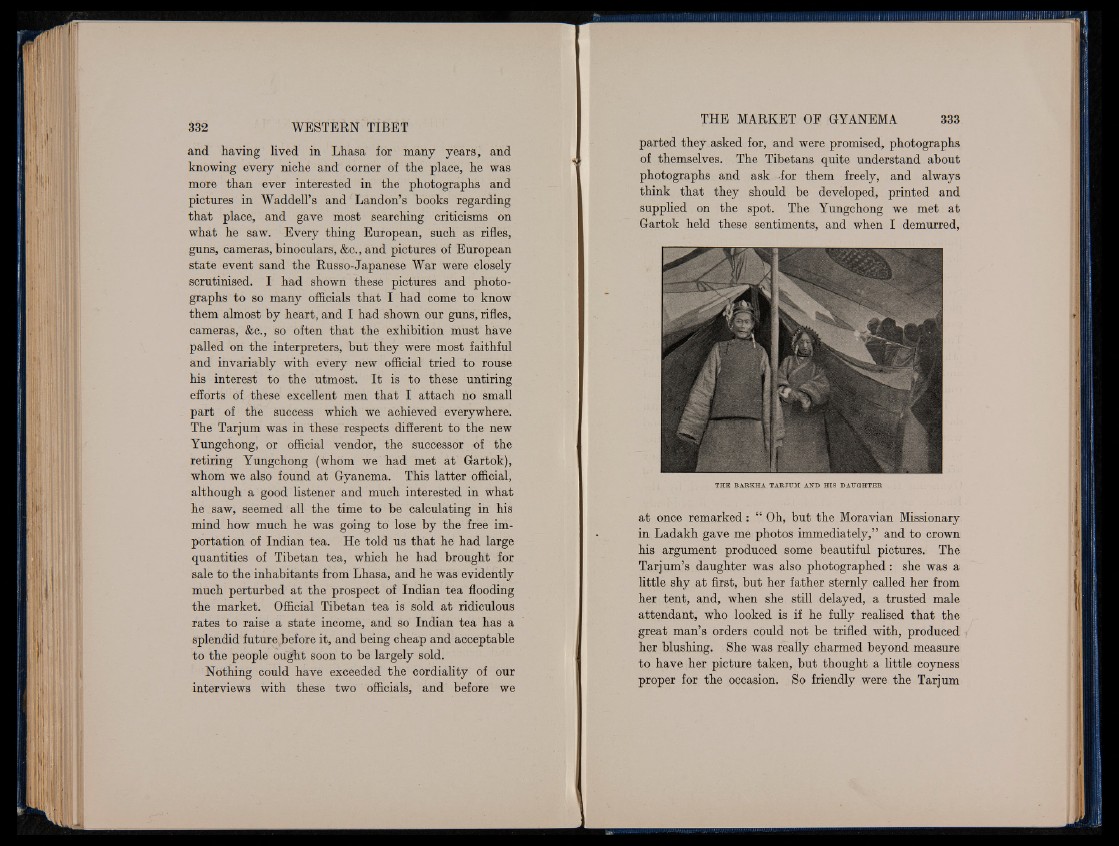
and having lived in Lhasa for many years, and
knowing every niche and corner of the place, he was
more than ever interested in the photographs and
pictures in Waddell’s and Landon’s books regarding
that place, and gave most searching criticisms on
what he saw. Every thing European, such as rifles,
guns, cameras, binoculars, &c., and pictures of European
state event sand the Russo-Japanese War were closely
scrutinised. I had shown these pictures and photographs
to so many officials that I had come to know
them almost by heart, and I had shown our guns, rifles,
cameras, &c., so often that the exhibition must have
palled on the interpreters, but they were most faithful
and invariably with every new official tried to rouse
his interest to the utmost. I t is to these untiring
efforts of these excellent men that I attach no small
part of the success which we achieved everywhere.
The Tarjum was in these respects different to the new
Yungchong, or official vendor, the successor of the
retiring Yungchong (whom we had met at Gartok),
whom we also found at Gyanema. This latter official,
although a good listener and much interested in what
he saw, seemed all the time to be calculating in his
mind how much he was going to lose by the free importation
of Indian tea. He told us that he had large
quantities of Tibetan tea, which he had brought for
sale to the inhabitants from Lhasa, and he was evidently
much perturbed at the prospect of Indian tea flooding
the market. Official Tibetan tea is sold at ridiculous
rates to raise a state income, and so Indian tea has a
splendid future,before it, and being cheap and acceptable
to the people ought soon to be largely sold.
Nothing could have exceeded the cordiality of our
interviews with these two officials, and before we
parted they asked for, and were promised, photographs
of themselves. The Tibetans quite understand about
photographs and ask for them freely, and always
think that they should be developed, printed and
supplied on the spot. The Yungchong we met at
Gartok held these sentiments, and when I demurred,
THE BARKHA TARJUM AND HIS DAUGHTER
at once remarked: “ Oh, but the Moravian Missionary
in Ladakh gave me photos immediately,” and to crown
his argument produced some beautiful pictures. The
Tarjum’s daughter was also photographed: she was a
little shy at first, but her father sternly called her from
her tent, and, when she still delayed, a trusted male
attendant, who looked is if he fully realised that the
great man’s orders could not be trifled with, produced
her blushing. She was really charmed beyond measure
to have her picture taken, but thought a little coyness
proper for the occasion. So friendly were the Tarjum